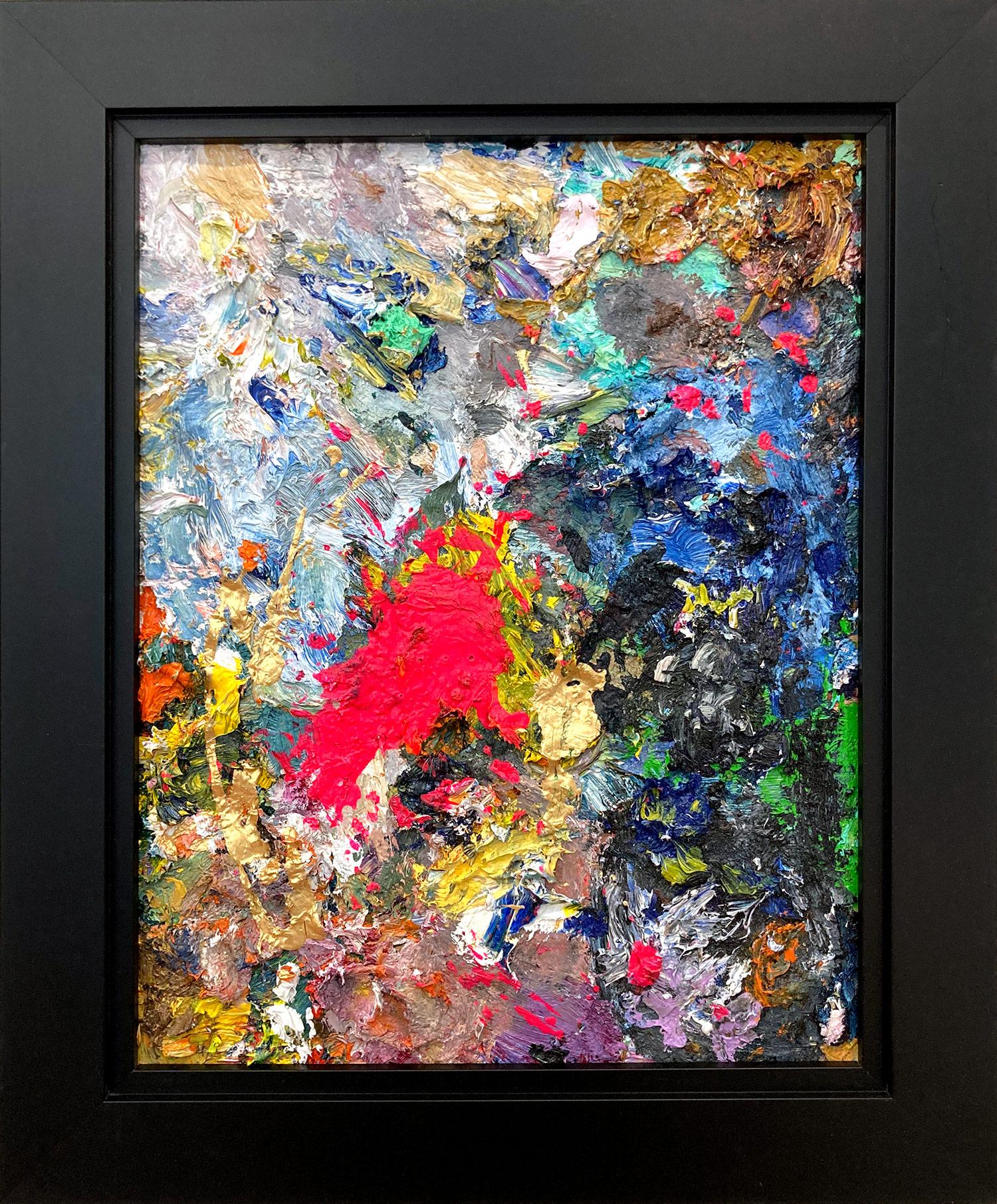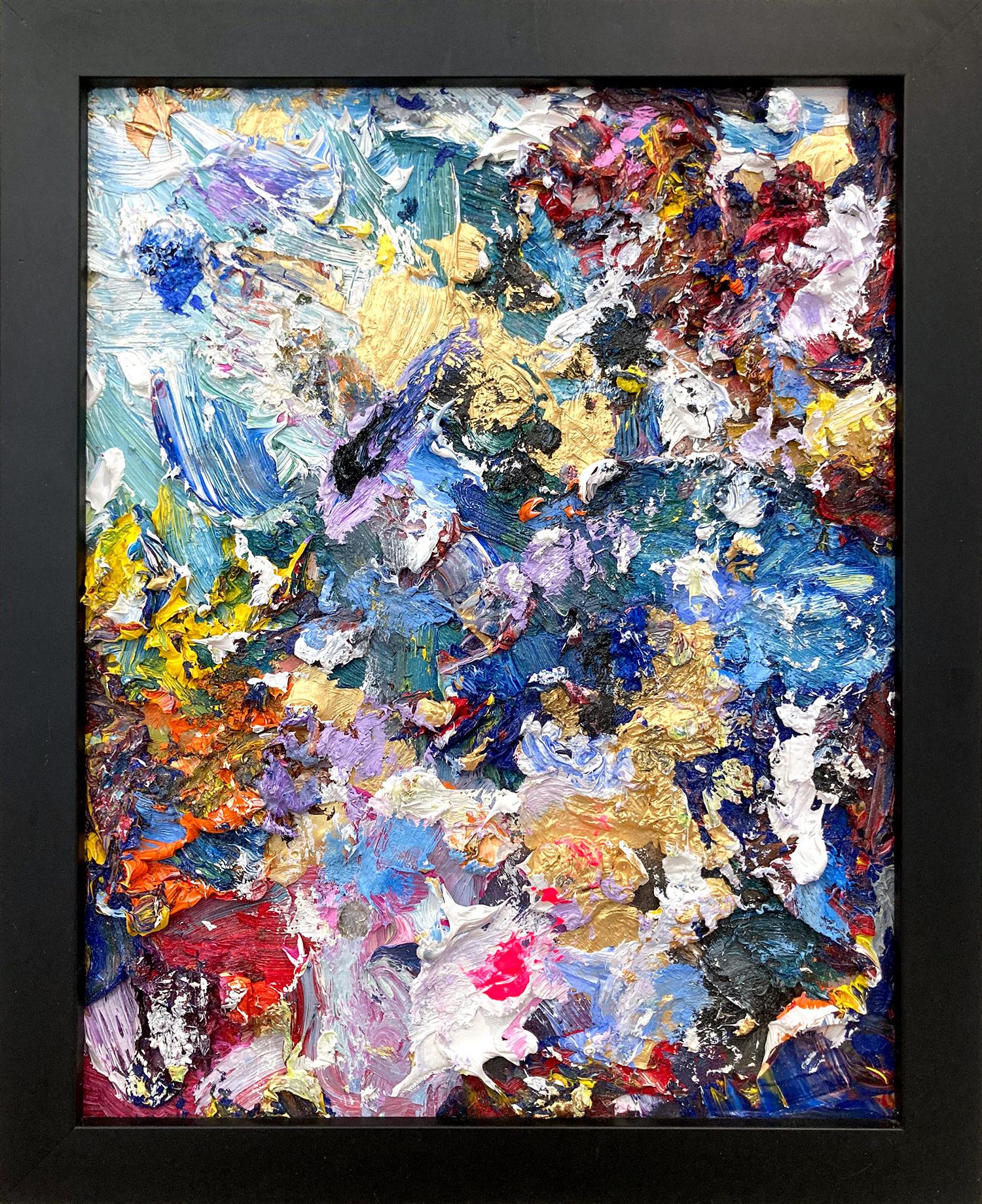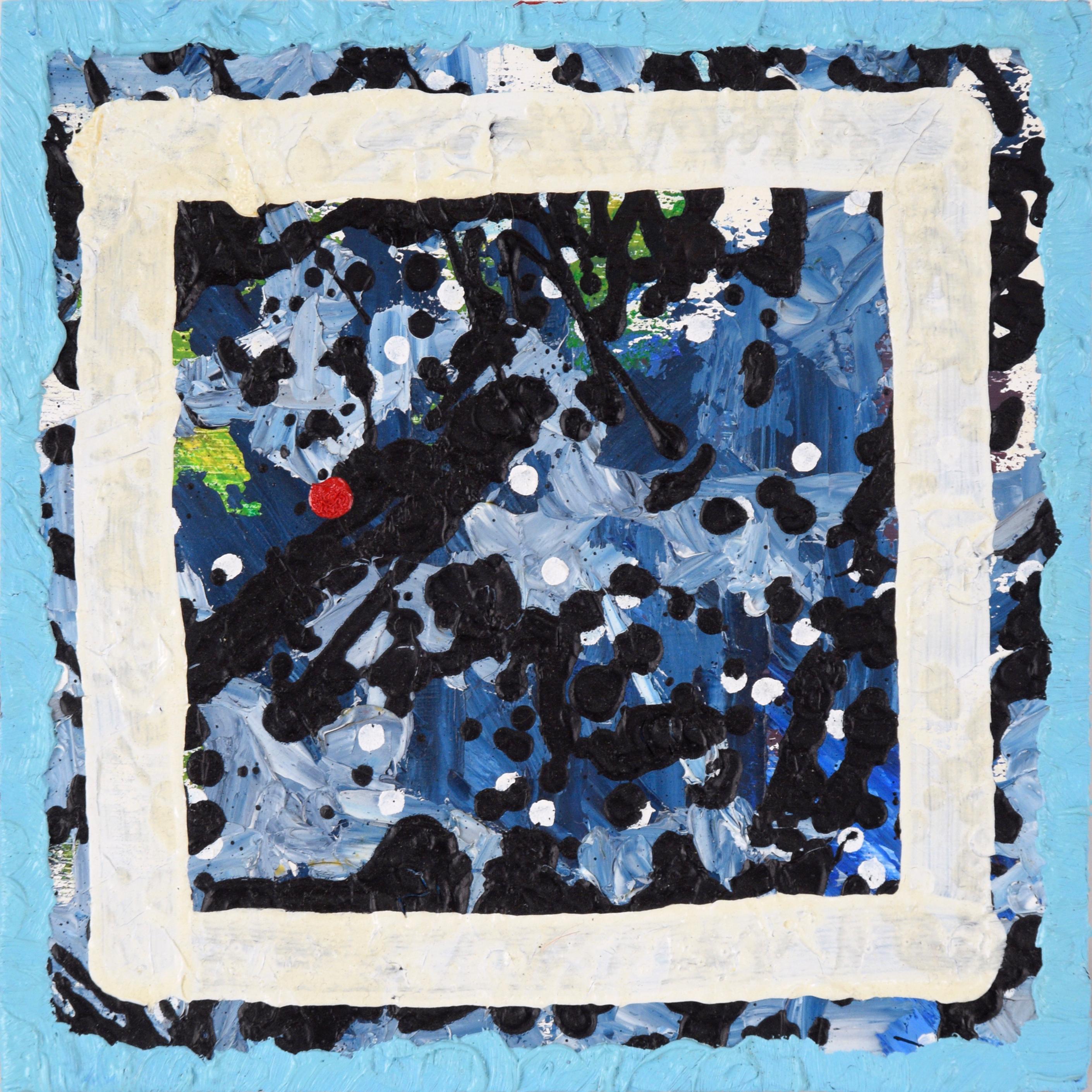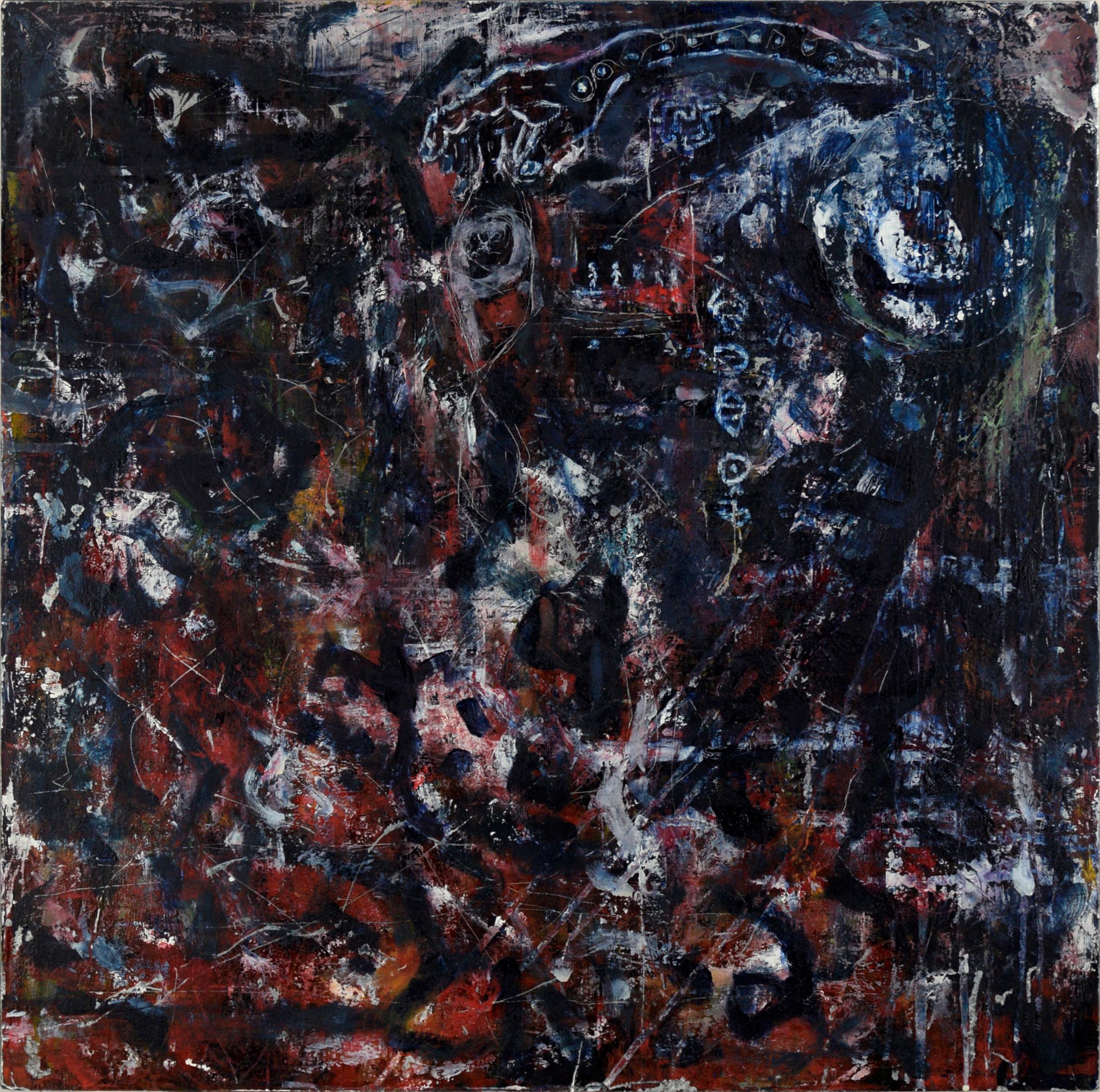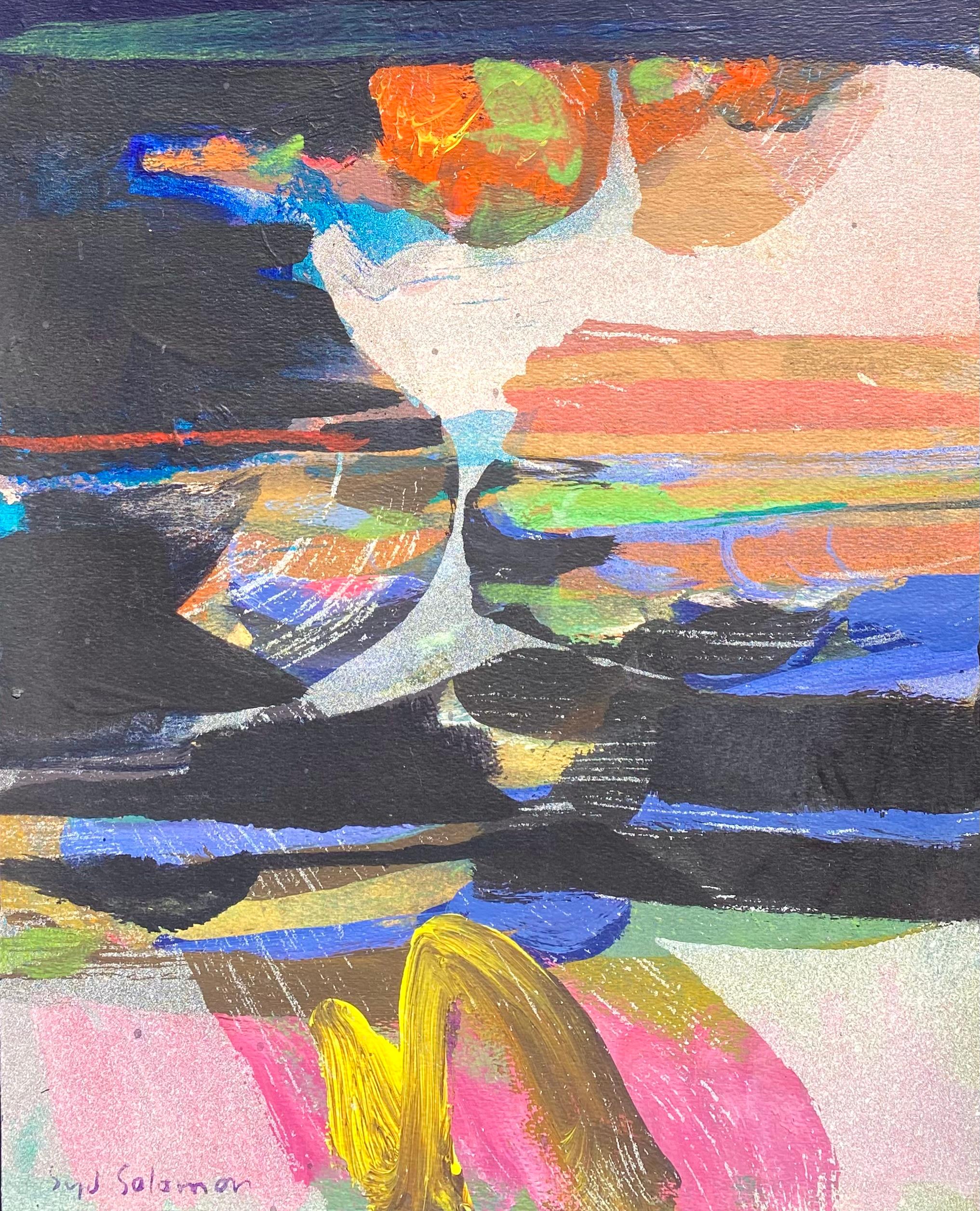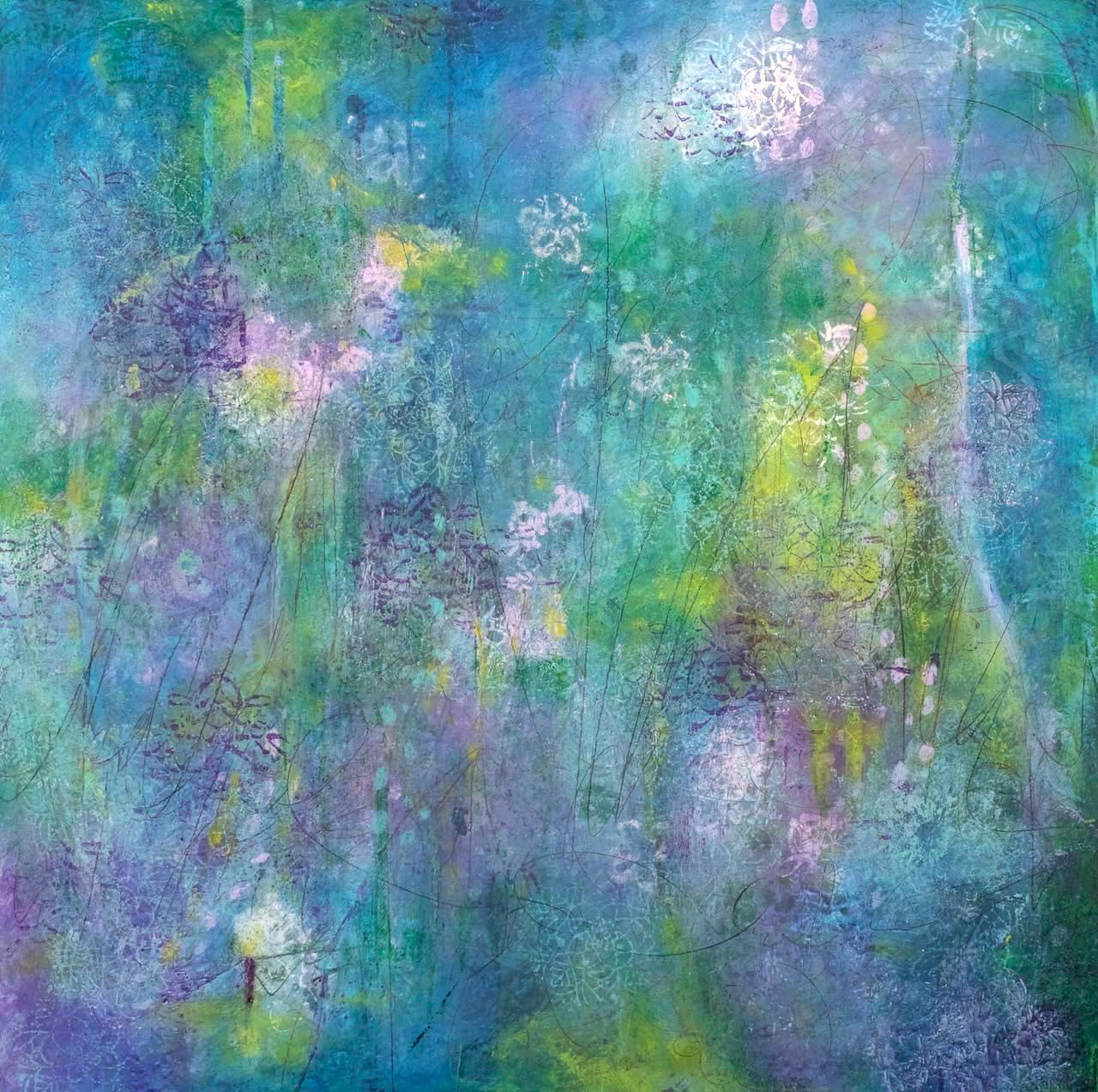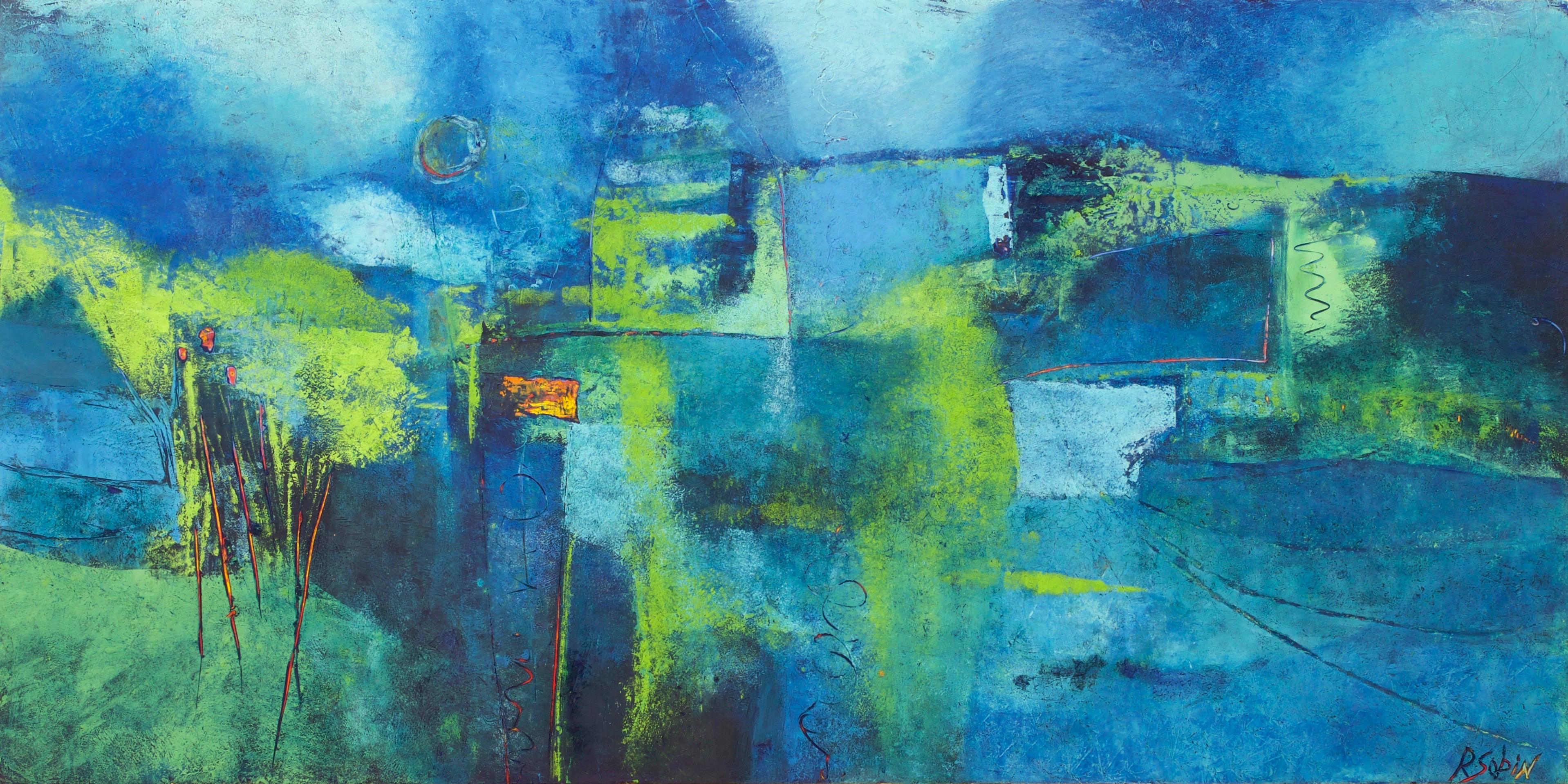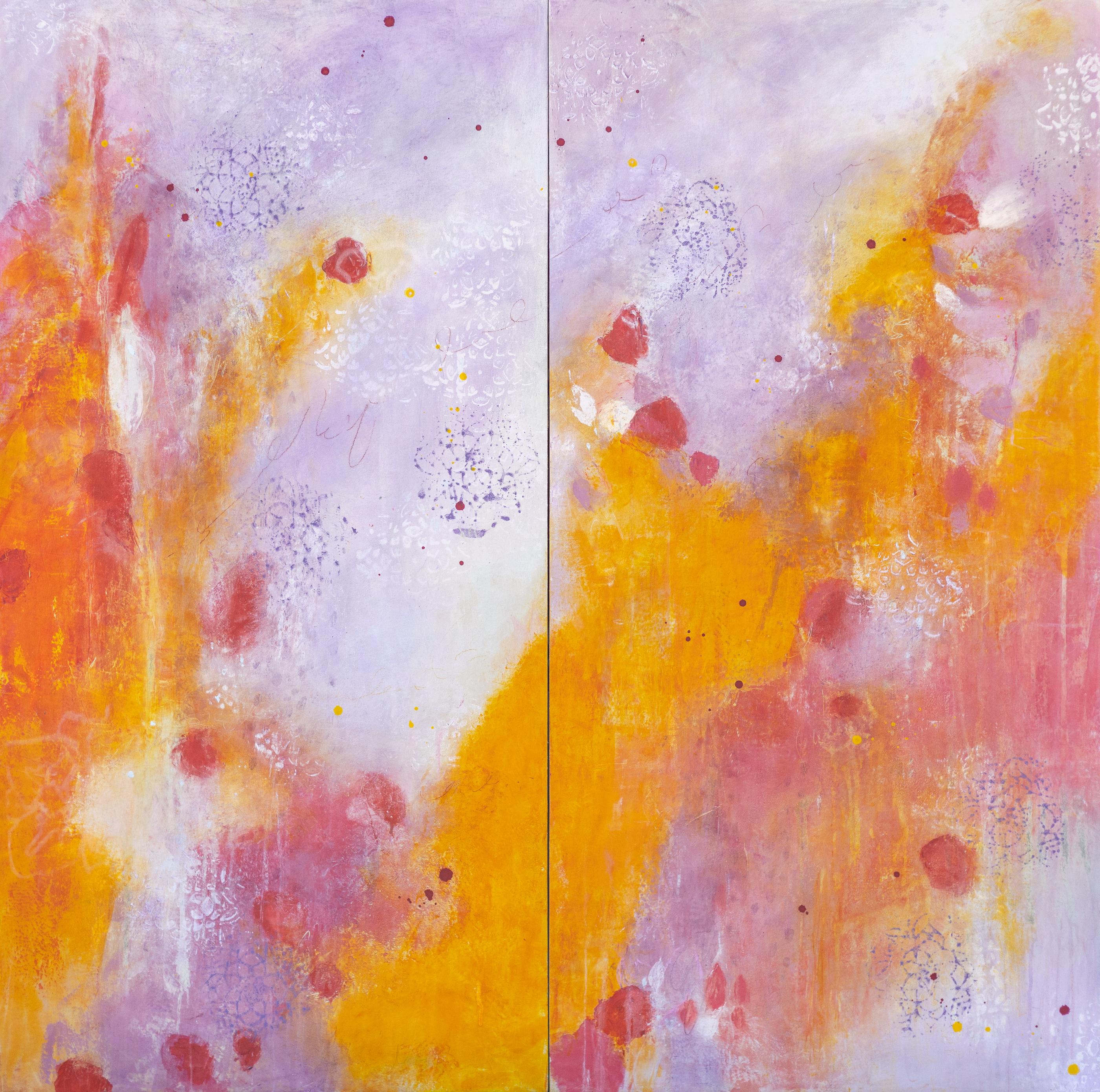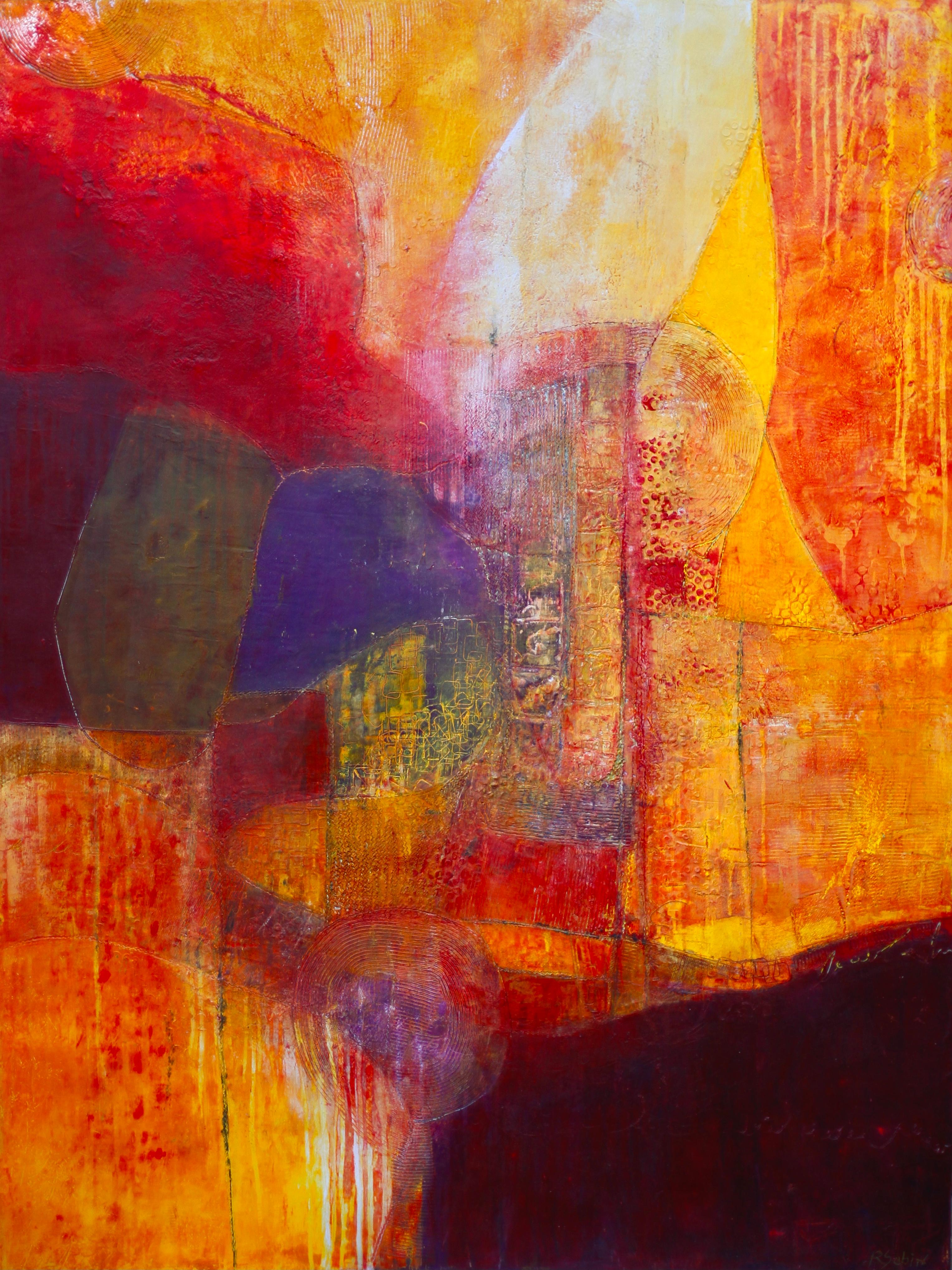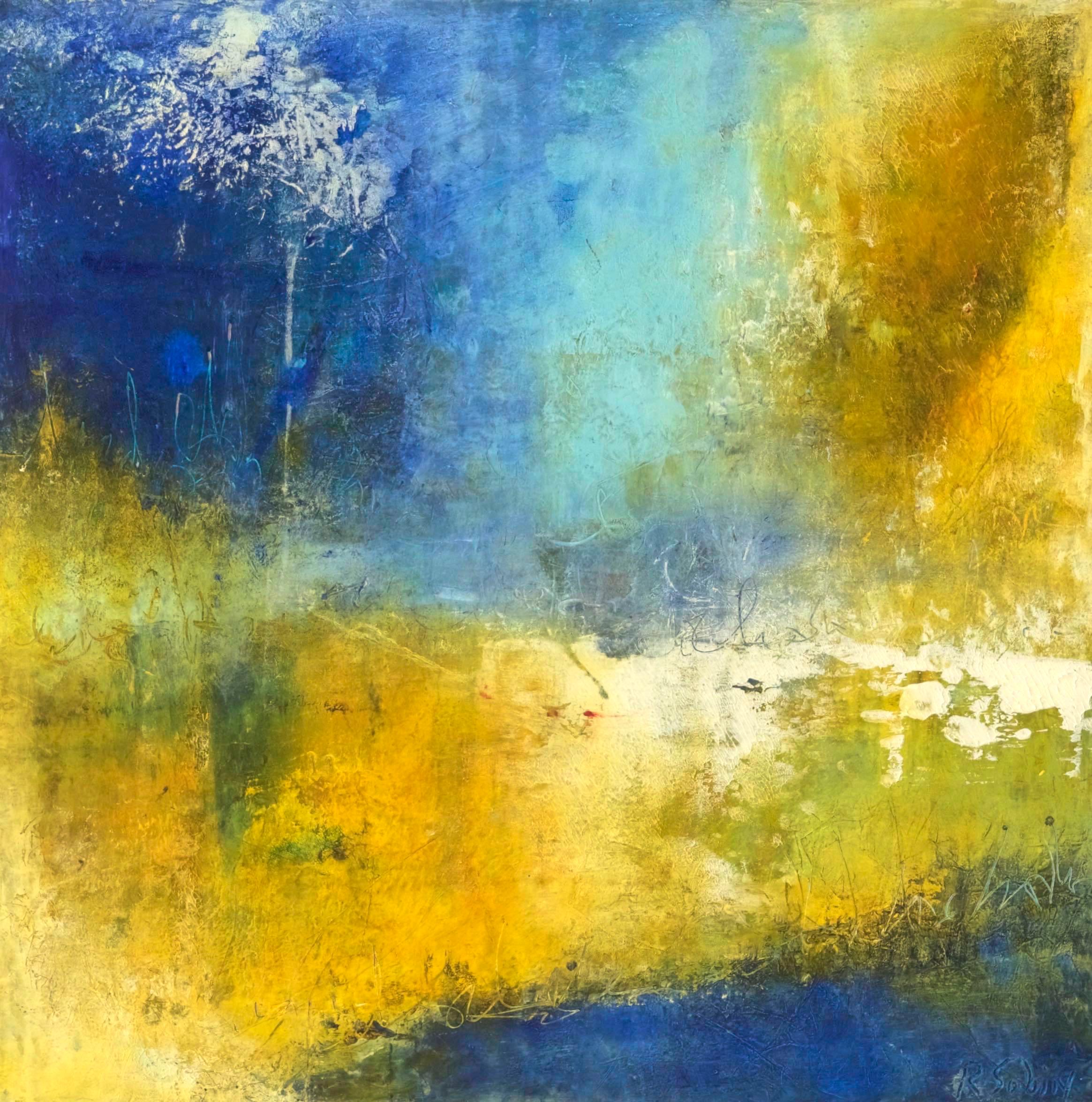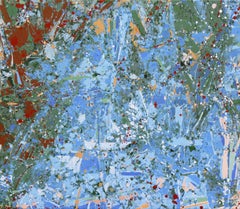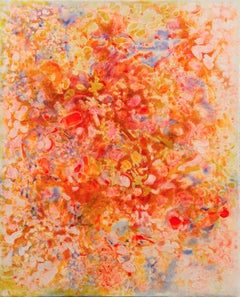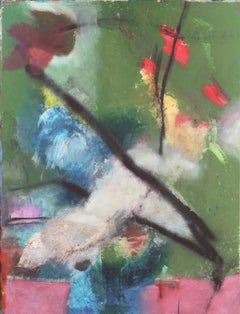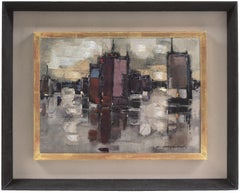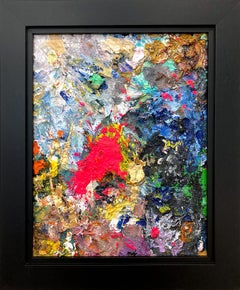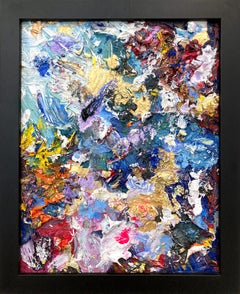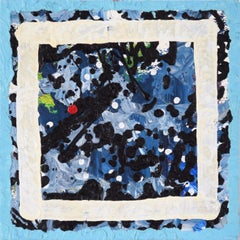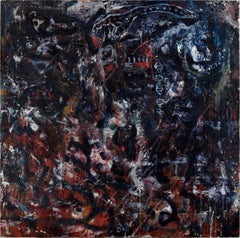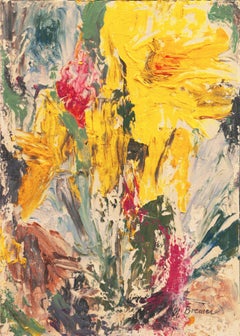
'Abstract in Saffron and Sage', NYU, National Association Women Artists, NYAE
View Similar Items
Want more images or videos?
Request additional images or videos from the seller
1 of 12
Marlene Bremer'Abstract in Saffron and Sage', NYU, National Association Women Artists, NYAECirca 1996
Circa 1996
$1,250List Price
About the Item
- Creator:Marlene Bremer (1937 - 2018, German, American)
- Creation Year:Circa 1996
- Dimensions:Height: 16.5 in (41.91 cm)Width: 11.5 in (29.21 cm)Depth: 0.13 in (3.31 mm)
- Medium:
- Movement & Style:
- Period:
- Condition:painting: minor curve to board, minor losses; frame: minor marks; shows well.
- Gallery Location:Santa Cruz, CA
- Reference Number:1stDibs: LU3449952072
About the Seller
5.0
Platinum Seller
Premium sellers with a 4.7+ rating and 24-hour response times
Established in 1982
1stDibs seller since 2013
744 sales on 1stDibs
Typical response time: 1 hour
Authenticity Guarantee
In the unlikely event there’s an issue with an item’s authenticity, contact us within 1 year for a full refund. DetailsMoney-Back Guarantee
If your item is not as described, is damaged in transit, or does not arrive, contact us within 7 days for a full refund. Details24-Hour Cancellation
You have a 24-hour grace period in which to reconsider your purchase, with no questions asked.Vetted Professional Sellers
Our world-class sellers must adhere to strict standards for service and quality, maintaining the integrity of our listings.Price-Match Guarantee
If you find that a seller listed the same item for a lower price elsewhere, we’ll match it.Trusted Global Delivery
Our best-in-class carrier network provides specialized shipping options worldwide, including custom delivery.More From This Seller
View All'Blue Abstract', NYU, Paris, Pompidou, Guggenheim, NYMoMA, LACMA, AIC, Whitney
Located in Santa Cruz, CA
'American Action Abstract in Blue' by John Willenbecher, 1997.
Paris, Pompidou, Guggenheim, NYMoMa, LACMA, Whitney, Art Institute of Chicago, Fogg Museum, Bowdoin, Hirshhorn
--------...
Category
1990s Abstract Expressionist Abstract Paintings
Materials
Acrylic, Wood Panel
'Radiant Abstraction', Kinetogenics, AIC, SFMoMA, SFMA, São Paulo Biennial
By Richard Irving Bowman
Located in Santa Cruz, CA
'Radiant Abstraction' by Richard Bowman, 1962.
Kinetogenics, Art Institute of Chicago, SFMoMA, San Francisco Museum of Art, São Paulo Biennial
----
Signed lower left, 'R. Bowman' for Richard Irving Bowman (American, 1918-2001), titled, 'Kg. 55' (Kinetogenics 55) and dated February 1962. Additionally titled, on stretcher bar verso, 'Kg 55'.
Accompanied by a first edition copy of 'Richard Bowman: Radiant Abstractions', by Patricia Watts and Stefanie De Winter, published 2018.
Richard Bowman's work is featured in the July/August 2024 issue of Architectural Digest, in an article titled, 'Inside a 1920s LA Respite, Re-envisioned by Jamie Bush.
Richard Bowman was awarded a scholarship to study at the Art Institute of Chicago and received his Bachelor's degree in 1942. He subsequently attended the University of Iowa, receiving his Master's degree in 1945. Over the course of a long and distinguished career, Bowman exhibited internationally with success and was the recipient of numerous gold medals, prizes and juried awards.
With the Kinetogenics Series, which he began in 1956, Bowman explored the intersection of color and light using contemporary advances in light theory and fluorescence technology. "For this series, he started using fluorescent enamel alkyd paint, which, Bowman stated, emitted an actual, measurable energy from the canvas. He combines his early concept of elemental radiants with the gestures of a mature Abstract Expressionist. Incorporating bold fluorescent strokes of orange, yellow and blue, which are activated by the ultraviolet in daylight, Bowman's new abstractions represented a synthesis of the physical and sensorial transmissions of energy. The combination of the artist's interests in nuclear physics, atoms, and dynamism with these vibrant colors reflected Bowman's increasing confidence as an unconventional artist working in an unconventional medium." (Richard Bowman: Radiant Abstractions, p. 13)
"The 'kinetogenic' series which Bowman has been painting recently, are whorls of pure energy in colors from the violet edges of the spectrum in vibrant relationship to the vivid primaries of the center. These paintings have much less sense of place or landscape than Bowman paintings we have seen before. The “Environs” group accompanying the energy pictures in this exhibition, are, on the other hand, specific about place: are of flower beds and branches of trees, painted with the same brilliant color intensity. This use of vibrant colors gives an all-over electric, textural effect in contrast to the after-image jump which obtains when the vibrants are painted flat and geometric. This textural mosaic effect is close to the vision of heat and passionate rhythm which was central to pre-Columbian art, and is still present in the Mexican arts and crafts, which were one of Bowman’s formative sources. It is interesting to note that several of the painters who have influenced many others to experiment with vibrancy and glow in color, found their own impetus in this direction while painting in Mexico. Bowman was one of the painters who was working with fluorescents when the general tendency was to paint with muck. One feels that using color thus leads the artist, as it did his pre-Columbian esthetic ancestors, in the direction where the ecstatic becomes mystic." (courtesy: Artforum, April 1964)
Thomas Albright writes of the artist, "Visiting Mexico on a traveling fellowship in the early 1940s, [Bowman] met Gordon Onslow-Ford, with whom he renewed a friendship after moving to San Mateo County in the early 1950s. His paintings, although gestural and abstract, were close in spirit to those of the Dynaton artists than to the mainstream of Abstract Expressionism. They constituted an intensely lyrical and metaphorical abstract Impressionism inspired by Bonnard and an intimacy with the natural environment. Bowman was also influenced by jazz improvisation and the jazz poetry of Kenneth Patchen, a close friend" (p. 263)
EDUCATION
Art Institute of Chicago, BFA, 1944
University of Iowa, MFA, 1949
AWARDS
1942 Edward L. Ryerson Foreign Traveling Fellowship, Art Institute of Chicago (Mexico)
1945 William M. R. French Memorial Gold Medal, Art Institute of Chicago
1952 Modern Painting Prize, Montreal Museum of Fine Arts
1972 Gift of Time Grant, Roswell Museum and Art Center, Roswell, New Mexico
SOLO EXHIBITIONS
1945 The Pinacotheca Gallery (Rose Fried Gallery) New York
1946 Milwaukee Art Institute, Wisconsin
1949 Swetzoff Gallery, Boston
1949 Bern Porter Gallery, Sausalito, CA
1950 Kinetic ... A commentary on the relationship of SCIENCE and ART. Stanford Art Gallery, Stanford University, Palo Alto, CA
1956 Stanford University, Palo Alto, CA
1957-1977 (every 18 months) Rose Rabow Galleries, San Francisco
1961 Richard Bowman: Paintings and Reflections.1943-1961. San Francisco Museum of Art
1970 Richard Bowman: Paintings from 1966-1970. San Francisco Museum of Art
1972 Richard Bowman: Paintings, 1943-1972. Roswell Museum and Art Center, New Mexico. Traveled to the Museum of Texas Tech University, Lubbock, 1972; and Sacred Heart Convent Gallery, Menlo Park, 1972
1986 Richard Bowman: Forty Years of Abstract Painting. Harcourts Modern Gallery, San Francisco
2000 Rock and Sun: Richard Bowman's Pioneer Abstractions of the 1940s. Steven Wolf Fine Arts, San Francisco
2019 Radiant Abstractions, Curated by Patricia Watts. the Landing Gallery, Los Angeles
TWO-PERSON EXHIBITIONS
1945 Room of Chicago Art: Paintings by Richard Bowman and Russell Woeltz. Art Institute of Chicago.
1947 Joan Mitchell and Richard Bowman: Oil Paintings. Harry and Della Burpee Art Gallery, Rockford, Illinois. Traveled to University of Illinois. Sponsored by Rockford Art Association.
1959 Gordon Onslow Ford and Richard Bowman. San Francisco Museum of Art
1990 Independent Abstraction: A Survey of Paintings by Richard Bowman and Emerson Woelffer. Harcourts Modern & Contemporary Art, San Francisco.
SELECT GROUP EXHIBITIONS
1943 Ras-Martin Gallery, Mexico City
1945 56th Annual American Exhibition of Oil Paintings. Art Institute of Chicago
1945 Art of This Century Gallery, New York
1947–48 Abstract and Surrealist American Art: Fifty-Eighth Annual Exhibition of American Paintings and Sculpture. Art Institute of Chicago. Curators: Daniel Catton Rich, Frederick A. Sweet, and Katherine Kuh. Catalogue.
1948 Fourth Summer Exhibition of Contemporary Art. State University of Iowa, Iowa City. Organized by Lester D. Longman. Included Milton Avery, Max Beckmann, Leonora Carrington, Max Ernst, Hans Hofmann, and others. Brochure.
1948 Joslyn Memorial Art Museum, Omaha, NE
1949 2nd Biennial Exhibition of Paintings and Prints. Walker Art Center, juried show, Minneapolis, 1949. Brooklyn Museum.
1951 [Group exhibition of University of Manitoba, Winnipeg, artists.] Montreal Museum of Fine Arts. Included William McCloy, Robert Gadbois, John Kacere, and other instructors from the School or Art, University of Manitoba.
1952 Sixty-ninth Annual Spring Show. Montreal Museum of Fine Arts. Bowman awarded Modern Painting Prize.
1953 Annual Exhibition of Canadian Painting. The National Gallery of Canada, Ottawa. Included John Kacere, William McCloy, Roland Wise, and Takao Tanabe.
1953 Winnipeg Group. Vancouver Art Gallery. Included William McCloy, John Kacere, Cecil Richards, Roland Wise.
1953–54 São Paulo Biennial of Modern Art, Second edition. Canadian section. Traveled to Caracas, Venezuela, and the Palacio de Bellas Artes, Mexico City. Catalogue.
1954 [Group exhibition of Winnipeg artists.] Art Gallery of Ontario, Toronto. Included Oscar Cah n, William McCloy, and Cecil Richards.
1954 Royal Ontario Museum, Toronto
1958 Esther Robles Gallery, Los Angeles
1959 Rabow Galleries, San Francisco. Included Julius Wasserstein, Gordon Onslow Ford, and Fred Reichman.
June 18, 1960 David Cole Gallery, Inverness, CA. Included Ruth Awasa, John Baxter, Nankoku Hidai, Onslow Ford, Fritz Rauh, David Simpson, and Jean Varda.
1961 Paintings from the Pacific: Japan, America, Australia, & New Zealand. Auckland City Art Gallery, New Zealand. Catalogue.
1961–62. Pittsburgh International Exhibition of Contemporary Paintings and Sculpture. Fine Arts Gallery, Carnegie Institute.
1962 50 California Artists. Whitney Museum of American Art, New York. Organized by the San Francisco Museum of Art, with assistance of the Los Angeles County Museum of Art. Traveled to Walker Art Center, Minneapolis, MN; Albright-Knox Gallery, Buffalo, NY; and Des Moines Art Center, IA. Catalogue.
February 1966 Contrasts. San Francisco Art Institute. Included Hassel Smith, Gordon Onslow Ford, and Ruth Asawa.
October 1967 Arleigh Gallery, San Francisco. Included Lee Mullican, Fred Reichman, Amalia Schulthess, and John Baxter.
1975 Gallery 865, San Francisco
1976 Painting and Sculpture in California: The Modern Era. San Francisco Museum of Modern Art.
1978 Creation. Galerie Schreiner, Basel, Switzerland. Included Joan Mir , Fritz Rauh, John Anderson, Ruth Asawa, J.B. Blunk, Roberto Matta, Lee Mullican, Gordon Onslow Ford, Wolfgang Paalen, Fritz Rauh, Yves Tanguy, and others. Accompanying book by Onslow Ford.
1984 A Personal Selection/Collection. David Cole Gallery, Inverness, CA. Forty-eight artists including Richard Diebenkorn, Claire Falkenstein, Richard Faralla, Sam Francis, Arthur Holman, Frank Lobdell, Ed Moses, Gordon Onslow Ford, Fritz Rauh, David Simpson, Amalia Schulthess, Jean Varda, Jack Wright, J.B. Blunk.
1987 Visions of Inner Space: Gestural Painting in Modern American Art. Wight Gallery, UCLA. Fifteen artists including Sam Francis, Morris Graves, John Anderson, Lee Mullican, Gordon Onslow Ford, Mark Tobey, and Ed Moses. Co-curated by Merle Schipper and Lee Mullican. Catalogue. Traveled to National Gallery of Modern Art, New Delhi, India, 1988
1997 Through the Light: An Exploration into Consciousness. Arts and Consciousness Gallery, John F. Kennedy University, Berkeley, California. Curated by Farbiba Bogzaran. Catalogue.
1998 Lee Mullican Memorial Exhibtion. Herbert Palmer Gallery, Los Angeles.
2007 The Rose Rabow Galleries Retrospective: 1959-1977. The 8 Gallery, San Franicsco.
2008 Landscapes of Consciousness: A Circle of Artists at the Beginning of Lucid Art. Weinstein Gallery, San Francisco. Included Gordon Onslow Ford, Fritz Rauh, John Anderson, and Jack Wright. Catalogue.
2016 Palm Springs Fine Art Fair, the Landing Gallery, Palm Springs, CA
2018 Ship of Dreams: Artists, Poets, and Visionaries of the S.S. Vallejo. Sonoma Valley Museum of Art, Sonoma, CA. Catalogue.
2019 FOG Design+Art. the Landing Gallery, San Francisco, CA
2020 FOG Design+Art. the Landing Gallery, San Francisco, CA
2022 FOG Design+Art. the Landing Gallery, San Francisco, CA
MUSEUM COLLECTIONS
Nora Eccles Harrison Museum of Art, Utah State University, Logan
Oakland Museum of California
San Francisco Museum of Modern Art
Santa Barbara Museum of Art, California
The Smart Museum of Art, University of Chicago
Taubman Museum of Art, Roanoke, Virginia
BOOKS AND CATALOGUES
1947 Rich, Daniel Catton. Abstract and Surrealist American Art: Fifty-Eighth Annual Exhibition of American Paintings and Sculpture. Chicago: Art Institute of Chicago.
1948 Fourth Summer Exhibition of Contemporary Art. Iowa City: State University of Iowa.
1956 Porter, Bern. Kinetic: A commentary on the relation of Science and Art in conjunction with a retrospective exhibition of paintings by Richard Bowman. Palo Alto: Stanford University Art Gallery.
1986 Kim Eagles-Smith, ed. Richard Bowman: Forty Years of Abstract Painting. San Francisco: Harold Parker in association with Harcourts Modern Gallery, Inc.
1961 Culler, George D. Richard Bowman, Paintings and Reflections, 1943-1901. San Francisco: San Francisco Museum of Art.
1962 Culler, George D. 50 California Artists. New York: Whitney Museum of American Art.
1972 Nordland, Gerald. Richard Bowman, Paintings, 1943-1972, Roswell, NM: Roswell Museum and Art Center.
1978 Onslow Ford, Gordon. Creation. Basel: Galerie Schreiner.
1987 Schipper, Merle. Visions of Inner Space: Gestural Painting in Modern American Art. Los Angeles: Frederick S. Wight Art Gallery, UCLA. With introduction by Lee Mullican.
1997 Bogzaran, Fariba. Through the Light: An Exploration into Consciousness. San
Francisco: Dream Creations.
2008 Bogzaran, Fariba. Landscapes of Consciousness: A Circle of Artists at the Beginning of Lucid Art. San Francisco: Weinstein Gallery.
2018 Bogzaran, Fariba, ed. Artists, Poets, and Visionaries of the S.S. Vallejo:
1949-1969. Inverness, CA: Lucid Art Foundation.
ARTICLES AND REVIEWS
[Review of Solo Exhibition at The Pinacotheca Gallery.] Art News. March 1945.
“Joan Mitchell, Richard Bowman Open TwoMan Show Tomorrow at Art Association Meeting.” Rockford Morning Star (IL). January 1947.
Robert Ayre. [Review of Exhibition, Montreal Mu-seum of Fine Arts.] Montreal Daily Star. 1951.
Ben Metcalfe. "Varsity Art Shock —A Morbid Hoax?" Winnipeg Tribune, December 3, 1951.
Beverly Wright. "Richard Bowman, abstract painter, has one-man show at Stanford Gallery." Palo Alto Times. February 17, 1956.
"Atomic Art Show at Stanford." San Francisco Chronicle. February, 19, 1956.
"P.A. Artist Portrays Energy in Oils." San Jose Mercury News. July 25, 1958.
Neita Crain Farmer. "A Solitary Voice: Richard Bowman's Paintings Say Something, In A New Way." Palo Alto Times. May 30, 1959.
Barbara Bladen. "Dick Bowman's Paintings Show Atomic Awareness," San Mateo Times. July 18, 1959.
Arthur Bloomfield. "Two Top Painters at San Francisco Museum." San Francisco Call Bulletin. July 31, 1959.
Alfred Frankenstein. "Slow and Fast Sculpture and Kinetogenics." San Francisco Chronicle. May 24, 1959.
"Paintings on Display: Bowman and Onslow Ford Show." San Francisco Weekly. July 1959.
Herman Wong. "Bowman's Art Seen At Show, Artist Builds Studio Near Hillside House." Red-wood City Tribune, September 15, 1960.
Dean Wallace. "Four Bring Their Art to Perfec-tion." San Francisco Chronicle. September 30, 1960.
Dean Wallace. "A Painter Looks at the Atom." San Francisco Chronicle. May 29, 1961.
Alfred Frankenstein. [Review of retrospective at San Francisco Museum of Art.] San Francisco Chronicle. November 12, 1961.
"International Art." Pittsburgh Post-Gazette, Sunday Magazine. October 29, 1961.
"Pacific Paintings Show Common Character-istics." The Press (Auckland, New Zealand). August 5, 1961.
Naomi Baker. "San Francisco's Art Is Viewed." San Diego Evening Tribune. January 26, 1962.
John Canaday. "Visitors From the West." New York Times. October 28, 1962.
Arthur Bloomfield. "Lost in a World They Were Never Made For." San Francisco News-Call Bulletin. August 3, 1963.
Arthur Bloomfield. "Bowman Paints His Own Path." San Francisco News-Call Bulletin. February 11, 1964.
"The Rockford Fifty States of Art Exhibition." Palo Alto Times. October 5, 1965.
Alfred Frankenstein. "Bowman's Radiant Ab-stract Art." San Francisco Chronicle. November 12, 1965.
Thomas Albright. "A Kind of Non-Art Show: Brilliant Work by Bowman." San Francisco Chronicle, February 14, 1970.
Paul Emerson, "Menlo Gallery Shows Bow-man Art: Major Retrospective Show." Palo Alto Times. October 6, 1972.
Arthur Bloomfield. "A Luxuriant Impact to Bowman Paintings." San Francisco Examiner. November 20, 1972.
Thomas Albright. "Two Artists Views of Na-ture." San Francisco Chronicle. October 9, 1974.
Arthur Bloomfield. "All But the Kitchen Sink." San Francisco Examiner. September 24, 1974.
Thomas Albright. "Realism Moves In." San Francisco Chronicle. Thursday, September 4, 1975.
Suzanne Muchnic. "Inspired Visions of Inner Worlds at UCLA." Los Angeles Times. January 10, 1988.
Reference:
Who Was Who in American Art 1564-1975: 400 Years of Artists in America, Peter Hastings Falk, Sound View Press 1999, Vol. 1, page 404; E. Benezit, Dictionnaire des Peintres, Sculpteurs, Dessinateurs, et Graveurs, Jacques Busse, 1999 Nouvelle Édition, Gründ 1911, Vol. 2, page 701; Art in the San Francisco Bay Area: 1945-1980, Thomas Albright, University of California Press, 1985, page 263; A Dictionary of Contemporary American Artists, Paul Cummings, St. Martin’s Press: New York 1966, page 66-67; Mallett’s Index of Artists, Supplement, Daniel Trowbridge Mallett, Peter Smith: New York 1948 Edition, R.R. Bowker Company 1940, page 31; Richard Bowman: Radiant Abstractions, essays by Patricia Watts and Stefanie De Winter, published by Watts...
Category
1960s Abstract Expressionist Abstract Paintings
Materials
Canvas, Oil, Alkyd
'Abstract in Orchid and Jade', San Francisco Art Institute, Large Bay Area Oil
By Kevin Keaney
Located in Santa Cruz, CA
'Abstract in Orchid and Jade' by Kevin Keaney.
San Francisco Art Institute, Large Bay Area Oil
----
Signed verso, 'Kevin Keaney' (American, born 1962) and painted circa 1995.
This S...
Category
1990s Abstract Expressionist Abstract Paintings
Materials
Chalk, House Paint, Acrylic, Board, Laid Paper
'Abstracted Cityscape', Modernist Abstract Oil, David Rockefeller Estate
By Max Gunther
Located in Santa Cruz, CA
'Abstracted Cityscape' by Max Gunther, 1958.
Modernist Abstract Oil, David Rockefeller Estate
----
Signed lower right, 'Max Gunther' (German, 1934-1...
Category
1950s Abstract Abstract Paintings
Materials
Canvas, Oil
'Abstract Landscape, Chestnut and Coral', Venice Biennale, Michetti Prize Winner
By Gianni Pisani
Located in Santa Cruz, CA
'Abstract Landscape, Chestnut and Coral' by Gianni Pisani, 1963.
Venice Biennale, Michetti Prize Winner
-----
Signed lower right 'G. Pisani' for Gianni Pisani (Italian, born 1935), ...
Category
1960s Abstract Abstract Paintings
Materials
Canvas, Masonite, Oil
'Abstract, Turquoise and Gray', Paris, Picasso, Andre L'Hote, Guernica, Benezit
By Dora Maar
Located in Santa Cruz, CA
'Abstract, Turquoise and Gray' by Dora Maar.
Paris, Picasso, Andre L'Hote, Guernica, Benezit
-----
Signed verso with artist monogram 'DM' for Dora Maar (Argentine-French, 1907-1997)...
Category
1930s Abstract Abstract Paintings
Materials
Canvas, Oil
You May Also Like
"Dreaming of Your Kiss" Abstract Oil Painting on Wood Panel in Black Frame
By Cindy Shaoul
Located in New York, NY
With layers of bright oils, whisking brush strokes, and thrown paint, Shaoul captures a love story through her paint pallet and abstract expression. The artist explores something new...
Category
2010s Abstract Expressionist Abstract Paintings
Materials
Mixed Media, Oil, Wood Panel
"My Dream Come True" Abstract Oil Painting on Wood Panel in Black Frame
By Cindy Shaoul
Located in New York, NY
With layers of bright oils, whisking brush strokes, and thrown paint, Shaoul captures a love story through her paint pallet and abstract expression. The artist explores something new...
Category
2010s Abstract Expressionist Abstract Paintings
Materials
Mixed Media, Oil, Wood Panel
"The Red is a Distraction" - Abstract Composition in Oil on Cradled Wood Panel
By Devon Brockopp-Hammer
Located in Soquel, CA
"The Red is a Distraction" - Abstract Composition in Oil on Cradled Wood Panel
Richly textured abstract composition by California artist Devon Brockopp-Hammer (American, b. 1986). Layers of paint are built up to create a textured composition with layers of depth. The piece is mostly shades of blue, with two small patches of green and yellow. There is one dot of red, providing a counterpoint and contrast to the other colors.
Panel size: 8"H x 8"W
Titled, initialed, and dated on verso "The Red is a Distraction" DJBH 2023
Unframed.
Devon Brockopp-Hammer (American, b. 1986) is an artist from Sacramento...
Category
2010s Abstract Expressionist Abstract Paintings
Materials
Oil, Wood Panel
Figurative and Abstract Expressionist Composition in Oil on Wood Panel
Located in Soquel, CA
Dynamic and expressive abstract expressionist composition by SF Bay Area found artist "Aska" (20th Century). Colors are patched and layered in a controlled...
Category
Early 2000s Abstract Expressionist Figurative Paintings
Materials
Oil, Wood Panel
$1,298 Sale Price
29% Off
“Stratawind”
By Syd Solomon
Located in Southampton, NY
Original oil paint and acrylic paint on wooden panel by the well known American artist, Syd Solomon. Signed lower left. Signed, titled and dated 1971 verso . Condition is very good. No restorations. Original frame. Overall framed measurements are 17 by 14 inches. Partial Saidenberg Gallery, New York City label verso. Provenance: A Long Island, New York collector.
American, 1917-2004
SYD SOLOMON BIOGRAPHY:
Written by Dr. Lisa Peters/Berry Campbell Gallery
Syd Solomon was born near Uniontown, Pennsylvania, in 1917. He began painting in high school in Wilkes-Barre, where he was also a star football player. After high school, he worked in advertising and took classes at the Art Institute of Chicago. Before the attack on Pearl Harbor, he joined the war effort and was assigned to the First Camouflage Battalion, the 924th Engineer Aviation Regiment of the US Army. He used his artistic skills to create camouflage instruction manuals utilized throughout the Army. He married Ann Francine Cohen in late 1941. Soon thereafter, in early 1942, the couple moved to Fort Ord in California where he was sent to camouflage the coast to protect it from possible aerial bombings. Sent overseas in 1943, Solomon did aerial reconnaissance over Holland. Solomon was sent to Normandy early in the invasion where his camouflage designs provided protective concealment for the transport of supplies for men who had broken through the enemy line. Solomon was considered one of the best camoufleurs in the Army, receiving among other commendations, five bronze stars. Solomon often remarked that his camouflage experience during World War II influenced his ideas about abstract art. At the end of the War, he attended the École des Beaux-Arts in Paris.
Because Solomon suffered frostbite during the Battle of the Bulge, he could not live in cold climates, so he and Annie chose to settle in Sarasota, Florida, after the War. Sarasota was home to the John and Mable Ringling Museum of Art, and soon Solomon became friends with Arthur Everett “Chick” Austin, Jr., the museum’s first Director. In the late 1940s, Solomon experimented with new synthetic media, the precursors to acrylic paints provided to him by chemist Guy Pascal, who was developing them. Victor D’Amico, the first Director of Education for the Museum of Modern Art, recognized Solomon as the first artist to use acrylic paint. His early experimentation with this medium as well as other media put him at the forefront of technical innovations in his generation. He was also one of the first artists to use aerosol sprays and combined them with resists, an innovation influenced by his camouflage experience.
Solomon’s work began to be acknowledged nationally in 1952. He was included in American Watercolors, Drawings and Prints at the Metropolitan Museum of Art, New York. From 1952–1962, Solomon’s work was discovered by the cognoscenti of the art world, including the Museum of Modern Art Curators, Dorothy C. Miller and Peter Selz, and the Whitney Museum of American Art’s Director, John I. H. Baur. He had his first solo show in New York at the Associated American Artists Gallery in 1955 with “Chick” Austin, Jr. writing the essay for the exhibition. In the summer of 1955, the Solomons visited East Hampton, New York, for the first time at the invitation of fellow artist David Budd. There, Solomon met and befriended many of the artists of the New York School, including Jackson Pollock, Franz Kline, Willem de Kooning, James Brooks, Alfonso Ossorio, and Conrad Marca-Relli. By 1959, and for the next thirty-five years, the Solomons split the year between Sarasota (in the winter and spring) and the Hamptons (in the summer and fall).
In 1959, Solomon began showing regularly in New York City at the Saidenberg Gallery with collector Joseph Hirshhorn buying three paintings from Solomon’s first show. At the same time, his works entered the collections of the Whitney Museum of American Art, the Solomon R. Guggenheim Museum, and the Wadsworth Athenaeum in Hartford, Connecticut, among others. Solomon also began showing at Signa Gallery in East Hampton and at the James David Gallery in Miami run by the renowned art dealer, Dorothy Blau.
In 1961, the Guggenheim Museum’s H. H. Arnason bestowed to him the Silvermine Award at the 13th New England Annual. Additionally, Thomas Hess of ARTnews magazine chose Solomon as one of the ten outstanding painters of the year. At the suggestion of Alfred H. Barr, Jr., the Museum of Modern Art’s Director, the John and Mable Ringling Museum in Sarasota began its contemporary collection by purchasing Solomon’s painting, Silent World, 1961.
Solomon became influential in the Hamptons and in Florida during the 1960s. In late 1964, he created the Institute of Fine Art at the New College in Sarasota. He is credited with bringing many nationally known artists to Florida to teach, including Larry Rivers, Philip Guston, James Brooks, and Conrad Marca-Relli. Later Jimmy Ernst, John Chamberlain, James Rosenquist, and Robert Rauschenberg settled near Solomon in Florida. In East Hampton, the Solomon home was the epicenter of artists and writers who spent time in the Hamptons, including Alfred Leslie, Jim Dine, Ibram Lassaw, Saul Bellow, Barney Rosset, Arthur Kopit, and Harold Rosenberg.
In 1970, Solomon, along with architect Gene Leedy, one of the founders of the Sarasota School of Architecture, built an award-winning precast concrete and glass house and studio on the Gulf of Mexico near Midnight Pass in Sarasota. Because of its siting, it functioned much like Monet’s home in Giverny, France. Open to the sky, sea, and shore with inside and outside studios, Solomon was able to fully solicit all the environmental forces that influenced his work. His friend, the art critic Harold Rosenberg, said Solomon’s best work was produced in the period he lived on the beach.
During 1974 and 1975, a retrospective exhibition of Solomon’s work was held at the New York Cultural Center and traveled to the John and Mable Ringling Museum in Sarasota. Writer Kurt Vonnegut, Jr. conducted an important interview with Solomon for the exhibition catalogue. The artist was close to many writers, including Harold Rosenberg, Joy Williams, John D. McDonald, Budd Schulberg, Elia Kazan, Betty Friedan...
Category
1970s Abstract Expressionist Abstract Paintings
Materials
Oil, Acrylic, Wood Panel
Prana
Located in Austin, TX
"Prana" is an abstract expressionist painting by Rebecca Sobin executed in oil, cold wax medium, and graphite on a cradled wood panel; measuring 36 x 36 inches.
Titled "Prana" the ...
Category
21st Century and Contemporary Abstract Expressionist Abstract Paintings
Materials
Wax, Oil, Wood Panel, Graphite
$3,200
